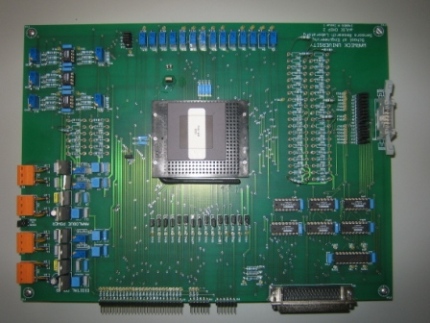Fauzan Khairi Che Harun

Fauzan Khairi Che Harun
Researcher
Sensors Research Laboratory
University of Warwick
Tel: 02476 574494
Email: F.K.Che-Harun@warwick.ac.uk
Miniaturize Artificial Nose System for Medical Application
This research focuses on developing a portable electronic nose system with large sensor array that will be applied for medical application. Much research has been undertaken in the area of Biomedical Engineering. Recent development in biomedical engineering using electronic noses includes the detection of Mycobacterium tuberculosis (TB) [1], screening of aroma-producing lactic acid bacteria [2] and monitoring of Haemodialysis [3]. There has also been much research regarding cancer detection using dogs. Dog sense of smell is far more sensitive than human. In fact, a dog has more than 220 million olfactory receptors in its nose, while humans have only 5 million. Most commercial electronic nose contains maximum of only 32 sensors in the sensor array. Small number of sensor array is good enough for specific application but to increase the sensitivity and selectivity, a large sensor array would perform better.

Figure 1: Block Diagram for Portable E-Nose
At this stage, i?m currently testing a neural network chip which contains 3 separate neural network models with each model having 3 receptor neurons, 27 synapses and 1 principal neuron. The chip was fabricated in AMS 0.6μm CUP process [4]. This neural chip will function as a data processing unit and is fed with nose responses from an electronic nose chemical sensor chip. The next stage is stacking 9 of this board to create a complete neural network architecture system for electronic nose.

Figure 2 : Neural Network Chip Board
The portable electronic nose system will consists of a sensor array, analogue to digital converter, processing unit with memory and an interface to a more powerful processing unit for characterization and discrimination. Ideally, a portable electronic nose system should be power efficient, small, sensitive, fast and contain an integrated microfluidic system and integrated signal processing unit. The object of this research is to develop an electronic nose system employing large sensor array that could mimic the human olfactory system and possesses robust odour classification ability.
